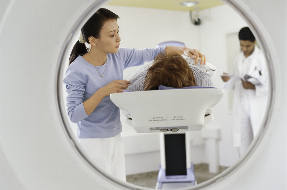Cardiovascular Services
Heart Disease
Heart disease is the leading killer of Americans today, and a heart attack is the most visible sign of heart disease. The American Heart Association says that 16,800,000 American adults suffer from coronary heart disease; about 8,700,000 women and 8,100,000 men.
Coronary heart disease refers to the failure of the blood vessels to supply adequate circulation to the heart and surrounding tissue. Coronary artery disease is the most common type of coronary heart disease.
Source: American Heart Association. Heart Disease & Stroke Statistics - 2009 Update. Dallas, Texas: American Heart Association; 2009.
Coronary Artery Disease
Coronary artery disease is caused by the accumulation of plaques within the walls of the arteries that supply blood to the myocardium, or the muscle of the heart. This narrowing of the blood vessels restricts the flow of essential nutrients that the heart muscle needs to function and continuously pump blood throughout the body.
The heart has a unique way of providing the increased blood flow that is needed during periods of exercise or stress. A network of collapsed arteries and veins, called flow reserve, is ready to be used if needed. The heart also has the ability to develop collateral vessels to bring blood to heart tissues that may require more. When narrowing of the arteries occurs with coronary artery disease, some of these collapsed vessels open so that the heart can maintain optimal flow. A portion of the flow that should be reserved for stress or exercise is needed for resting function. In fact, blood flow to the heart tissue at rest is not decreased, so that symptoms may not be detected until the blockage is extensive, which may be when all the collapsed vessels in the area are fully utilized to address the needs of the heart at rest. Further narrowing or blockage prevents the heart muscle from getting the blood it needs, even at rest.
Decreased or absent blood flow to the heart muscle from coronary artery disease may imply that the heart is permanently damaged and the patient may require a heart transplant. However, very often, revascularization or restoring blood flow, with bypass surgery may be all that is required to restore blood flow and function to the heart muscle.
Proper treatment depends on understanding the level of severity of the disease and impact on the heart's function.




